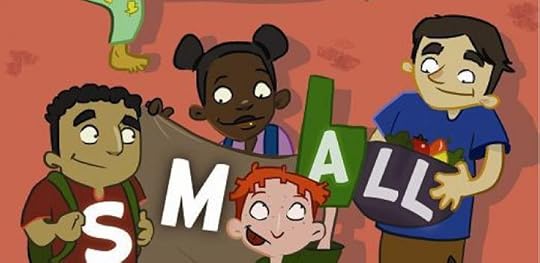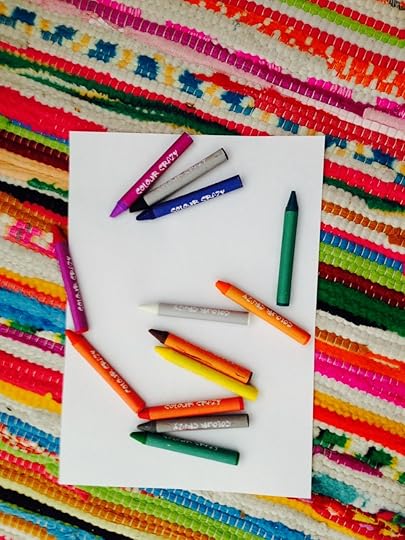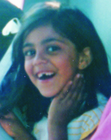Why We Publish Diverse Books

diverse book
diverse book
I vividly remember being sat on the carpet of my reception classroom, amongst many of my peers. I was proudly using the set of crayons before me to complete my picture and eagerly taking it to my teacher to show it off.
But when she looked at it, she said, “You haven’t coloured yourself in.”
I was perplexed by this. Surely I didn’t have to because the paper was already white. Surely the teacher must know you don’t have to colour the people in. But I made my way back to the crayons to please her. I picked up the white crayon and coloured in my face in the picture. I presented my work to the teacher again. This time she told me I hadn’t really chosen the correct colour for myself. I clearly remember thinking that my teacher had gone nuts. People were always this colour in pictures. Why was she being so weird and not praising my picture!
How many vivid memories of our early years education do we carry through to adulthood? The only other memory I have of that age is of the twins in my class who we had to identify as ‘Blue Peter. Red David.’ We carry through one or two, if any memories, I’m guessing—thanks to what Sigmund Freud coined as childhood amnesia. So why is this colouring incident so firmly imprinted on my cerebral cortex? Perhaps more importantly, why was I—a Britsh Pakistani—drawing myself as a little white girl? The answer lies in what has over the last few months become a matter of discourse in the publishing world—a lack of diverse books. Of 3,200 children’s books published in 2013, just 93 were about black people, according to a study by the Cooperative Children’s Book Center at the University of Wisconsin. Of those 3,200 34 were about American Indians, 69 about Asians and 57 about Latinos. Things were obviously no better thirty years ago in the UK (and experts say they still aren’t) when I was making confused colouring choices at school. So it’s hardly surprising that I thought people in pictures were always drawn white. I had most definitely never seen someone that looked like me in a book or a cartoon.

Twenty years later, when my own son was about the same age, I looked for diverse books which represented children like him and families like our own. But, unfortunately, these were extremely scarce. If anything, there were ‘cultural’ books which portrayed ethnic minorities, focusing on a certain aspect or practice exclusive to that culture or religion. But why should these children only be represented in books about their country of origin or religious festivals? I thought these books were a fantastic way to teach children about other cultures and allow children of ethnic minorities to feel that they are understood in the environment in which they live and are a part of. However, I wanted something different. I wanted funny, warm, inspirational, adventurous stories about children doing everyday things. Books that not only identify how these children are different, but celebrate how they are the same!
I wanted to publish diverse books in which my son and others like him could meet characters that looked like him. Characters that they admired and wanted to imitate. I wanted him to see a mother with a head scarf like I wore. I wanted these books to teach good practices, morals and values. And very importantly, I wanted these diverse characters to be portrayed in an unselfconscious manner. I wanted children from ethnicities and religions other than those represented in the book to identify and learn about differences but also identify and relate to many similarities. I felt it important for people like me, with an existing passion for writing, to make a contribution to the publishing of diverse books. As Lin Oliver, the Executive Director of the Society of Children’s Book Writers and Illustrators says “One of the reasons I’m so eager to read literature written by people with diverse backgrounds is to get their authentic take on their experience.”
So I began writing in 2006 and founded Sweet Apple Publishers in 2011. However, I have only fully been able to devote myself to it recently, after tearing myself away from my other passion--Science!
I wrote stories that derive from my own cultural, racial and religious experiences, as I mentioned, aiming to represent children like my own in books. I am a second generation British Muslim, who was born and raised in London. I identify more with my Muslim and British heritage than I do with my Pakistani heritage, and this is reflected in my books. We at Sweet Apple do want to represent children of all ethnicities and indeed this goes hand in hand with representing Muslim children in books since Muslims come from all parts of the world, with such beautiful diversity in complexions, races, languages, and so forth. Our most recent title, ‘Never Too Small,’ which is now available to pre-order from bookshops, represents children from all walks of life. I am very proud of this book, wonderfully illustrated by Laura Ewing Ferrer.
Needless to say I was very pleased with the awakening of the publishing world to the dearth of diverse books over the last few months. in an article published in ‘The New York Times’ after the above mentioned study, the acclaimed American children's author Walter Dean Myers, who was until recently the US's National Ambassador for Young People's Literature, points out, "Books transmit values. They explore our common humanity. What is the message when some children are not represented in those books?" There has indeed been a recent call for diverse books, highlighted by the recent #WeNeedDiverseBooks campaign—a social media campaign raising awareness of and creating solutions for the lack of diverse books.
Our children deserve to find characters like themselves in books. It helps them to grow, build confidence and feel understood in the world of which they are a part. As Rudine Sims Bishop points out in his article, “Mirrors, Windows, and Sliding Doors,” published in1990 - ““When children cannot find themselves reflected in the books they read, or when the images they see are distorted, negative, or laughable, they learn a powerful lesson about how they are devalued in the society of which they are a part.”
We are working hard here at Sweet Apple Publishers to make our contribution to the world of diverse books and represent more and more children with each publication, and we hope all the different coloured crayons are proudly used to colour in faces in classrooms today!
By Zanib Mian
Diverse booksMuslim charactersethnic diversity



